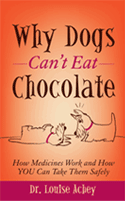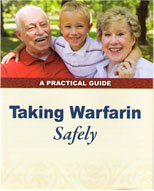Archive for August, 2013
August 23rd, 2013. Filed Under:
consumer information,
medicines,
Warfarin.
Tags:
anticoagulant,
blood thinner,
brodifacoum,
Dr. Karl Link,
environmental protection agency,
EPA,
rat poison,
rodenticide,
Wisconsin Agricultural Research FoundationSuperwarfarins are compounds closely related to the blood thinner warfarin, but longer acting and more potent. Warfarin was originally developed for use as a rat poison by Dr. Karl Link at the Wisconsin Agricultural Research Foundation and was marketed as a rodenticide in 1948. After first a fast-acting antidote and then a blood test was developed to adjusti the dose, it was used in humans as a potent blood thinner and is still one of the most important medications used today to prevent and treat blood clots in the legs or lungs.
Warfarin is a synthetic compound related to a naturally occurring compound found in sweet clover called coumarin. When hay containing sweet clover becomes moldy, the coumarin in the sweet clover oxidizes, changing it into a compound with significant anticoagulant properties which causes serious and often fatal bleeding in cows. Veterinarians called this bleeding disorder “sweet clover disease” and advised dairymen to avoid feeding moldy hay to their animals. But in the 1920s, times were so tough economically that many farmers could not afford to discard the spoiled hay.
Dr. Link and his colleagues at the Wisconsin Agricultural Research Foundation, also called WARF, successfully determined and isolated the cause of the bleeding, a compound which they named dicumarol. Dicumarol had a delayed effect on blood clotting, with symptoms of bleeding showing up 15 days after cows first ate tainted hay. Dicumarol was odorless and tasteless, important features of any successful rat poison, and Dr. Link believed that if he could find a compound similar in effect to dicumarol but which acted more quickly, he would have developed a good rat poison.
Eventually Dr. Link’s team found a derivative of dicumarol that fit his criteria, and it was named warfarin, after the facility that funded the research. Warfarin was widely used as a rodenticide until it became obvious that some rats were resistant to its effects. Certain rats had a genetic variation that made them “resistant” – these rats needed 10 times the usual dose to get an anticoagulant effect large enough to cause fatal hemorrhage. While the other rats died from internal bleeding, these rats survived and replaced the warfarin-susceptible rats. Drats!
This discouraging development triggered research to find more potent compounds such as brodifacoum, difenacoum, bromadiolone and difethiolone. Called “second generation anticoagulants” or “superwarfarins”, these agents have become the rat poisons of choice. Brodifacoum is the rodenticide used by more than 50% of professional pest controllers in the United States.
The blood thinning effects of these “superwarfarins” last over 12 times as long as warfarin. If a child or animal eats rat poison made with brodificoum, instead of treatment with an antidote for 1 week, more than 12 weeks of antidote administration will be required.
Another important difference between warfarin and newer “superwarfarins” is their relative toxicity to pets and wild animals. Anticoagulants move quickly into the bloodstream and do their work by causing the rat to build defective clotting compounds instead of active ones, eventually causing it to die from uncontrolled bleeding. As a rat becomes weaker from blood loss it also becomes slower and easier to kill. A successful hunter who eats a rat poisoned by anticoagulant also ingests the poison inside it.
Warfarin is quickly detoxified to inactive compounds, leaving less active anticoagulant inside a poisoned rat to be eaten by a hungry predator. A “superwarfarin” isn’t broken down or detoxified quickly, and instead remains completely active while it works. In 2012, following decades of a disturbing trend of finding increasing amounts of “superwarfarins” in the remains of birds of prey, wildcats and dogs, the Environmental Protection Agency (EPA) restricted the use of “superwarfarins” for rodent control.
Leave a Comment
Q: Why are blood thinners used to kill rats?
Most of us consider vomiting about as fun as slamming our finger in a car door. I agree! As a child, my chronic queasiness as a passenger in cars and boats bloomed into an Olympian-level hurling event more times than I ever want to recall. What humans don’t often appreciate about the ability to vomit is how useful it can be. I can hear you asking, “How can upchucking be considered a positive thing?” Barfing saves lives…Who knew? The main reason overindulging adolescents and young adults don’t die very often from alcohol poisoning is the ability to vomit it out (as in, “praying to the porcelain god”) before the booze is completely absorbed into their body .
Rats are able to eat almost anything, but unlike humans, they can’t vomit up spoiled or poisoned food. One reason rats are hard to exterminate is they are very hard to successfully poison. their habit of eating only a small amount of a new food source at a time. They sample the food and if they become sick they’ll avoid eating any more. Another reason rats are hard to kill with poison is their sensitivity to taste and smell. To be successful, any rat poison added to food or bait has to be odorless, practically tasteless, and have a delayed action.
Oral anticoagulants like warfarin and its coumarin relatives are effective rat poison because they lack a noticeable odor or taste and have a delayed effect of several days, making it hard for a rat brain to connect a particular ingestion to its eventual cumulative effect of major bleeding.
When warfarin and coumafuryl were first used as rodenticides, there was a significant variation in how much they reacted to the blood thinner. Unfortunately, a small percentage of rats were able to survive; in fact, some rats were pretty resistant, taking up to 10 times the usual dose in order to experience its anticoagulant effects. It’s interesting that a small number of people (humans, not rats!) that take warfarin also have a genetic variation that requires them to take over 10 times a typical dose in order for warfarin to be effective at thinning their blood.
Rats resistant to these early coumarins triggered the development of more potent, second generation anticoagulants called “superwarfarins”, such as brodifacoum, difenacoum, bromadiolone and difethiolone. Brodifacoum is the rodenticide used by more than 50% of professional pest controllers in the United States.
If you know someone taking warfarin, give them my full-color handout How To Take Warfarin so they can find out how to take it safely. A FREE copy is waiting here for you.
Leave a Comment
Q: I’m on warfarin. Is it true that I’m taking RAT POISON?
YES, you’re taking a medicine that originally was used to kill rats. We know warfarin, by the brand names Coumadin® and Jantoven® and as its generic name, warfarin. Warfarin is part of a group of plant-based compounds called coumarins. Coumarins are found in red clover and sweet clover as well as many other plants. In the early 1920s, some veterinarians noticed that at certain times of the year some cows had problems with bleeding. They called this phenomenon “sweet clover disease” because it was eventually linked to cows that ate sweet clover hay which hadn’t been cured properly. Without proper drying, one of the compounds that naturally occurred in sweet clover was still active, and caused bleeding in the cows who ate the hay containing it. The compound responsible for the bleeding, dicumerol, was identified in 1934 and by the early 1940s it was being tested in humans as a blood-thinning agent, or anticoagulant.
In 1945, a more potent cousin of dicumerol was patented by the Wisconsin Alumni Research Foundation (WARF) and named after it, called warfarin. Warfarin was first used as a rat poison or rodenticide because it was considered to be too potent to be safely used in humans, but after a blood test was developed to measure and adjust its blood-thinning effects, warfarin has become the most widely used oral anticoagulant in the United States.
By the late 1940s a close relative of warfarin called coumafuryl was marketed as a rodenticide or rat poison under the brand names Rat-A-Way® and Lurat®. Rats resistant to these early coumarins triggered the development of more potent, second generation anticoagulants called “superwarfarins”, such as brodifacoum, difenacoum, bromadiolone and difethiolone. Brodifacoum is the rodenticide used by more than 50% of professional pest controllers in the United States.Today, 95% of rodent control in the United States is done with some form of anticoagulant.
I share my 18 years of experience helping people take their warfarin safely in my full-color handout How To Take Warfarin. It’s available as a FREE download here.
Leave a Comment



